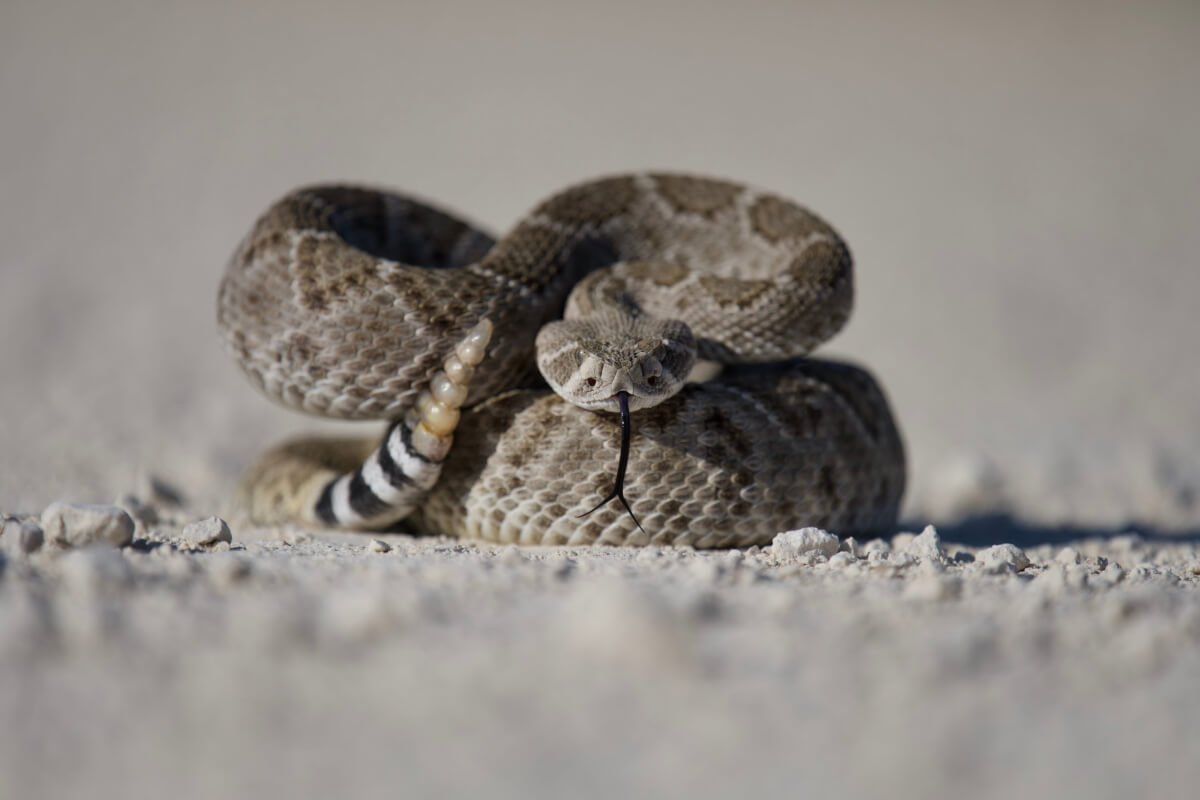If you get out there enough, someday you’re bound to run into a snake on the trail. Here at American Outdoor Guide Boundless, we’ve been following the adventures of AT thru-hiker Number 2 Pencil on his journey to complete the nearly 2,200 miles of the Appalachian Trail. This part of the country is rife with a few species of venomous snakes, namely the copperhead, timber rattlesnake and cottonmouth. Number 2 Pencil happened to encounter a copperhead once…twice…three times in one day!
The Snake Encounter Goes Awry
You did everything right while on your solo hike. Plodded loudly along. Kept your eyes and ears open. You stayed on the trail and didn’t chase the snake away when you came across it coiled right in your path. But as you were giving the snake a wide berth, it struck like lightning, sinking fangs into your ankle. Now what do you do?
- Walk away from the snake and sit down. Take five minutes to recover from the shock of the situation, calm down and make your plan.
- Remove any jewelry or tight clothing. You only need to remove anything tight from the bitten limb to prevent the swelling from causing constriction.
- Mark the bite with a Sharpie. Do this to track the swelling, the time and any symptoms that appear. Update the markings every 15 to 30 minutes as you move to get help.
- Get help. Don’t wait for symptoms to appear: get help immediately. If you have a satellite communicator, use that to make contact with someone and get help. If you only have a cell phone, try that, but if there’s no service, think back to the last time you had any. You will have to make your way back that way, taking it easy until you get there. Don’t worry about getting your heart rate worked up; it’s far better to seek care than to sit and wait for someone to find you.
What to Bring Next Time
Next time you’re wandering through snake country (which, in most cases, is hard to avoid), bring these items in case of snake bites:
- Sharpie marker. Use this to circle the bite after it happens to track the swelling, then write the time. As you develop symptoms, write these down as well, along with the time.
- 2-Way Satellite Communicator. If you’re deep in the wilderness, having one of these as your ally could save your life. They aren’t cheap, but neither is your life. Consider something like the (Garmin inReach Explorer®+ | Satellite Communicator with TOPO Maps).
- Cell phone. If you don’t have a satellite communicator, this is your next best bet, although service might be unreliable.
Check out Number 2 Pencil’s (one of many) snake encounters below.
If you are a subscriber, you can read more about snake encounters in our American Outdoor Guide Boundless June issue!
Stay tuned for more Number 2 Pencil updates and everything outdoors at American Outdoor Guide Boundless: https://www.americanoutdoor.guide/


